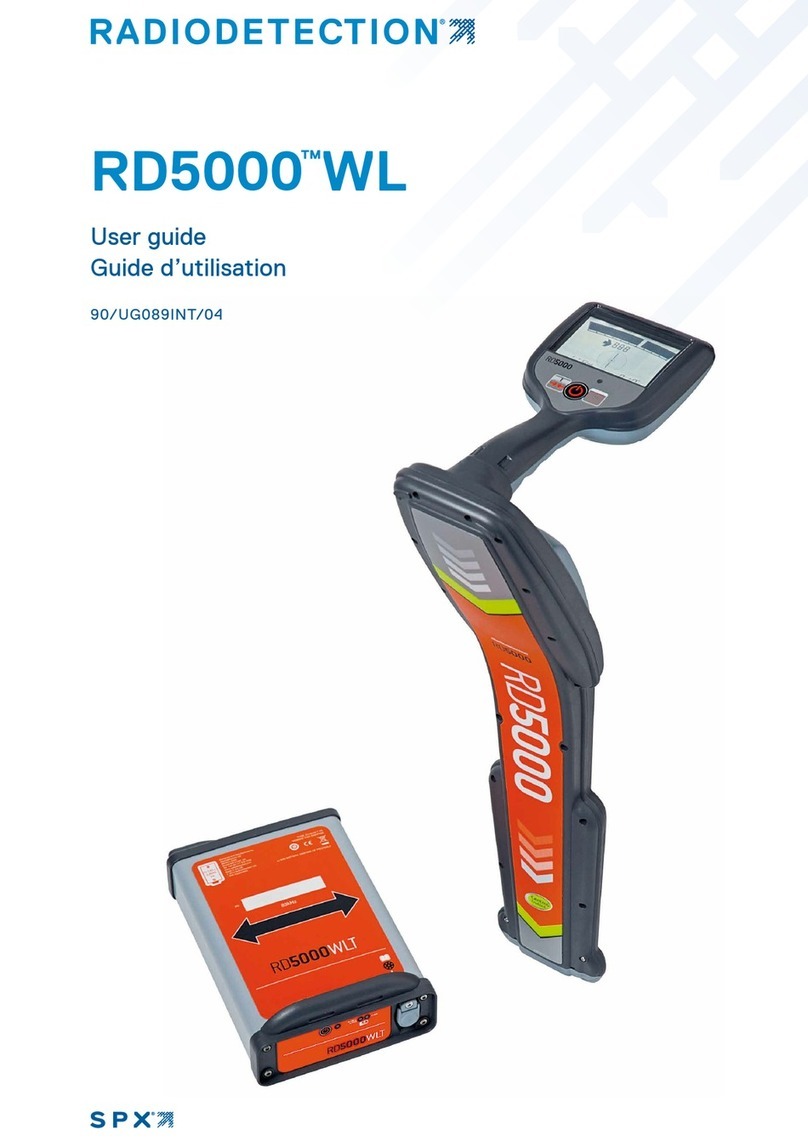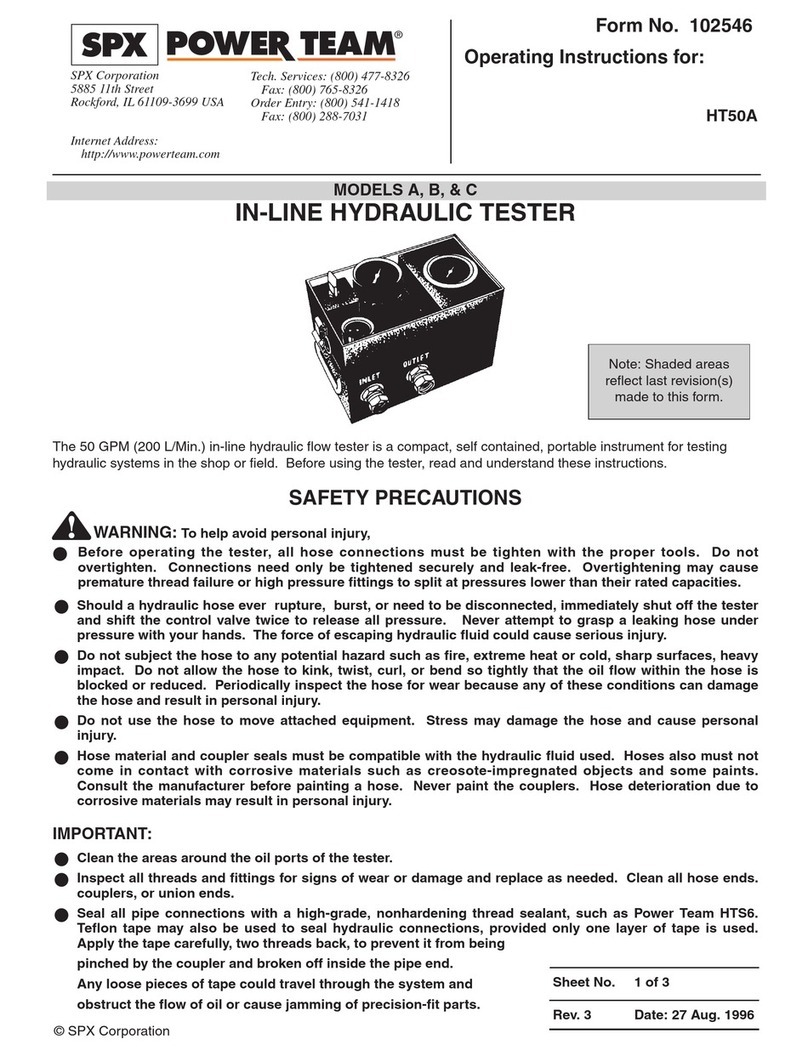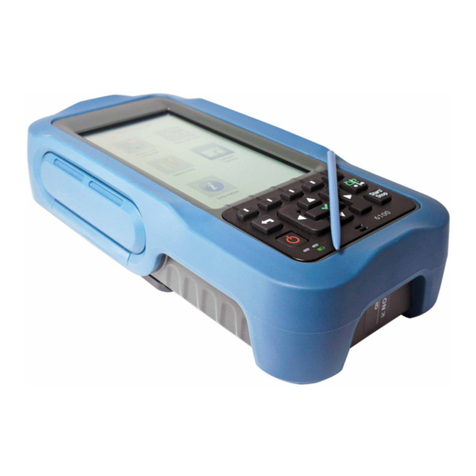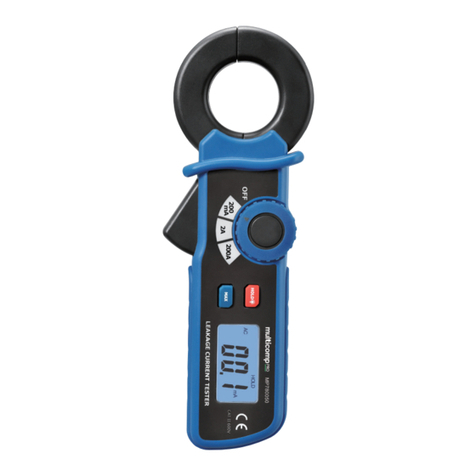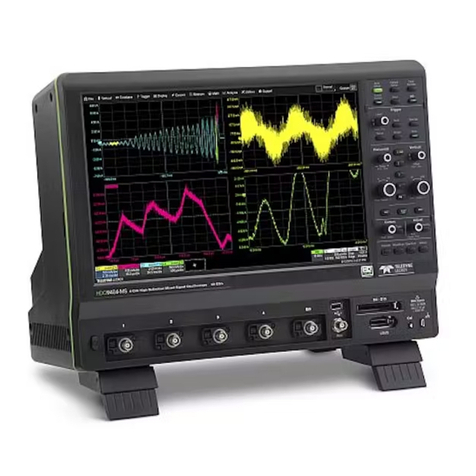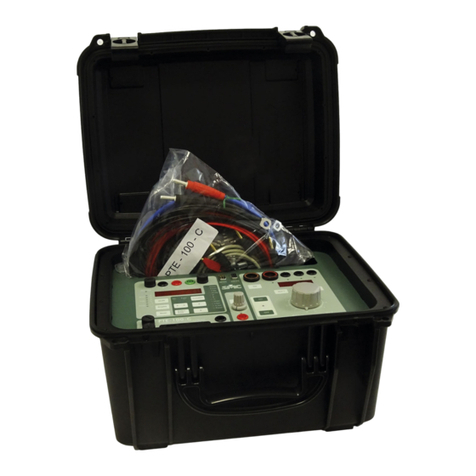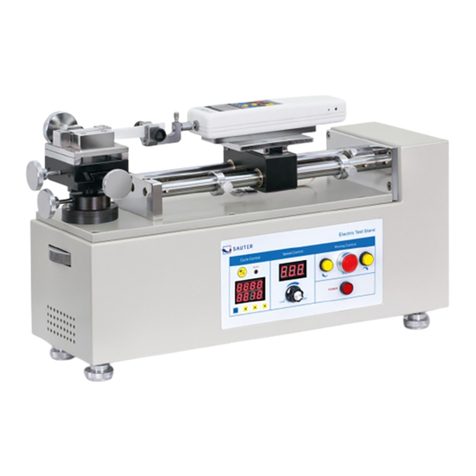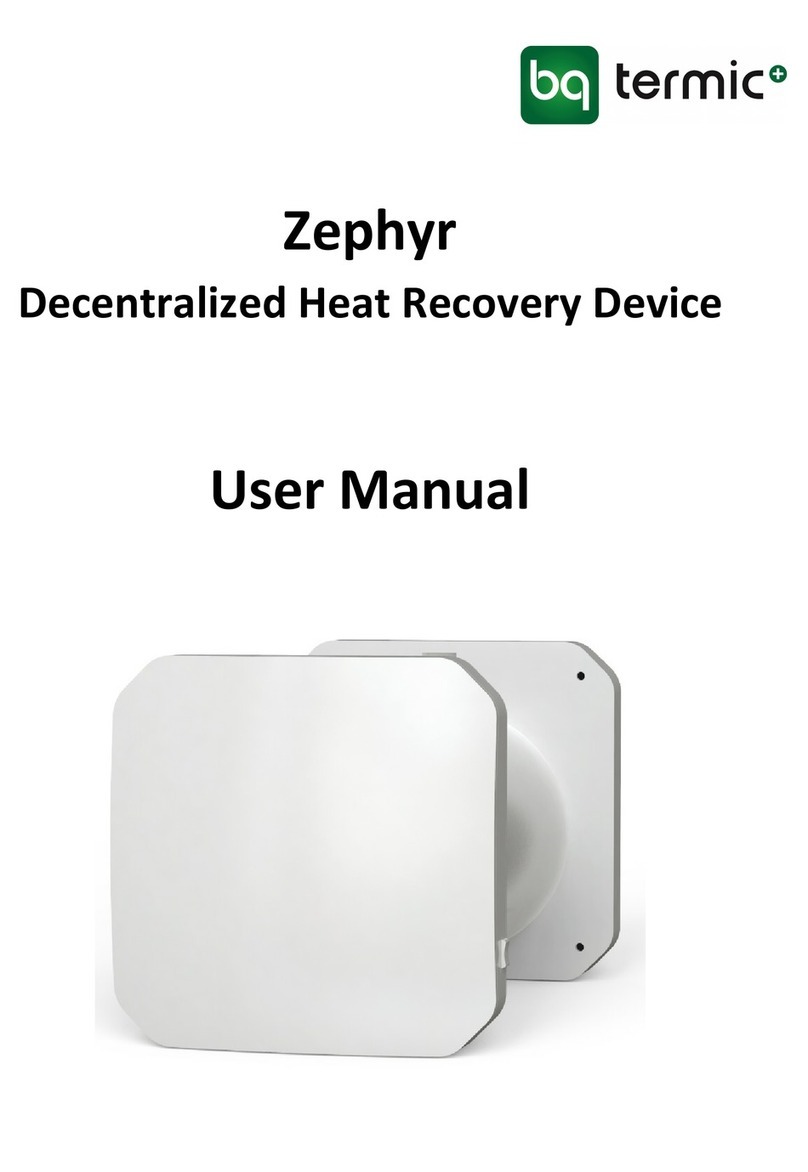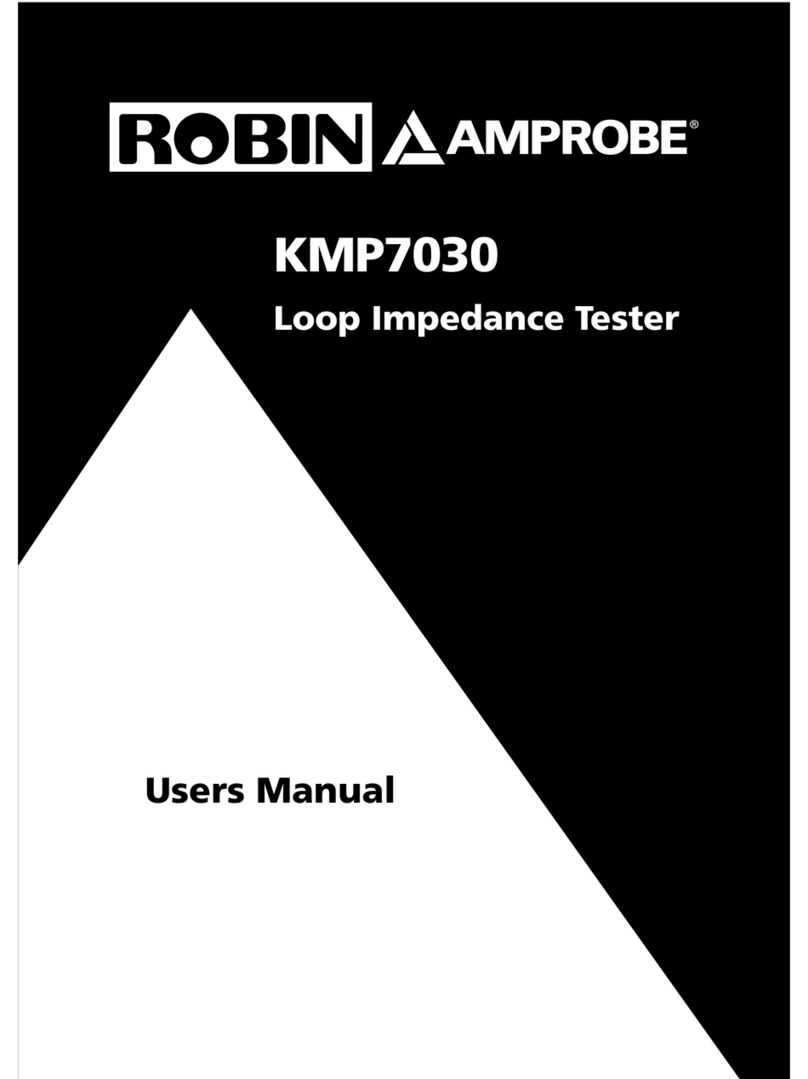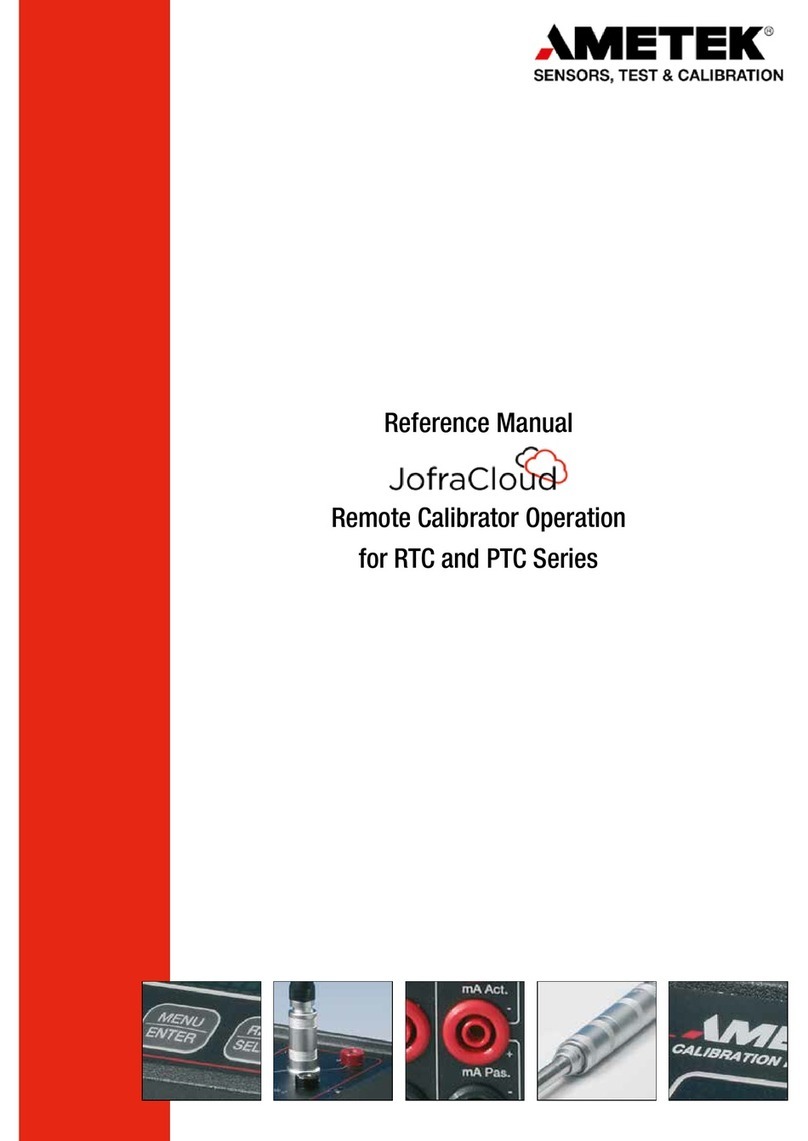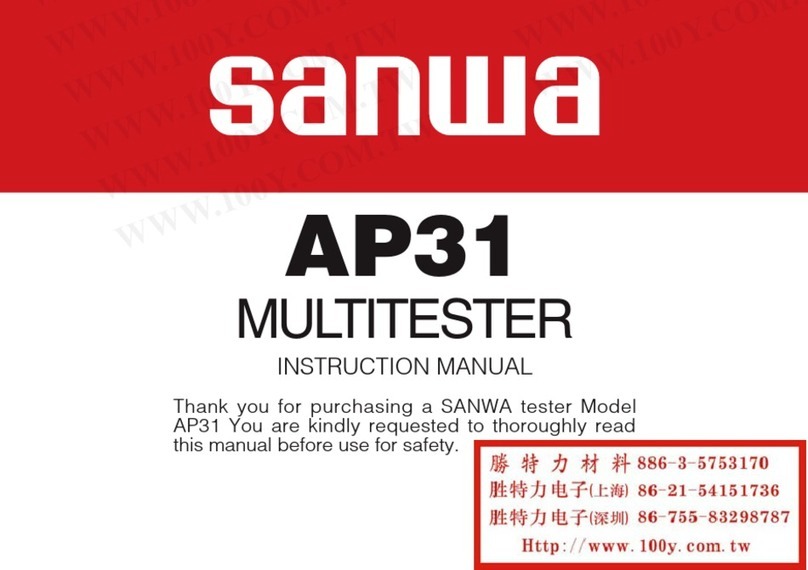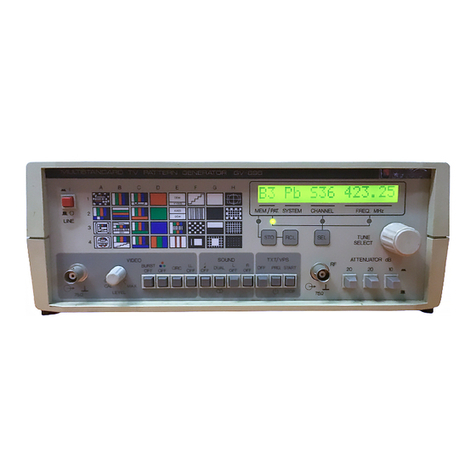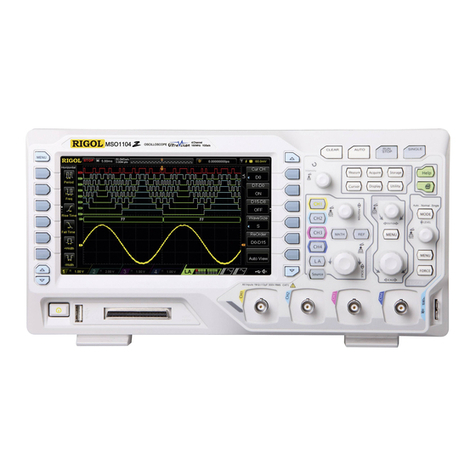SPX Radiodetection 6100-Gfast User manual

6100-Gfast
G.fast/VDSL/ADSL2+ Multi-play and Copper Test Set
User guide
Radiodetection’s 6100-Gfast is the perfect tool for testing G.fast, VDSL2, and ADSL2+
broadband deployments up to 1 Gbit/s. The unit supports both GVXAA and GVXAB
modems and can be used to install, troubleshoot and validate in-home multi-play
services. Please see the 6100-Cu User Guide (document 90/UG-6100-CU-ENG/01)
for information regarding Copper Tests.
Cable connections
DSL main menu
To access the Copper Main Menu:
1. From Home, select DSL/IP Tests and press to
open the DSL Main menu page.
2. Navigate to each icon using the up/ down left / right
arrow keys on the keypad.
3. Press to bring up the sub-menu of the selected
icon.
• or Auto, Manual Test or Ethernet Test, the test
will start and the screen control will navigate to the
results summary page.
• Result Manager opens the previously saved test
les to view, Upload, Export and Delete results.
• Test Conguration provides the utilities to setup
test parameters.
• Setup provides the means to congure the modem
power schemes and preset the unit with specic DSL
measurement values.
Note: System Settings can be found on the Home pane and allow you to set the
parameters of the unit.
Note: Any reference to pushing buttons on the keypad can be replaced in most cases by
clicking / tapping the touchscreen.
This guide is intended as a quick reference guide only. For detailed instructions, including
the use of accessories, please refer to the 6100-Gfast Operation manual, which is available
to download from www.radiodetection.com.
Saving test results
Each DSL/IP test includes an Upload/ Save Result tab to
Upload & Save your test results using the existing in-band
DSL or Ethernet connection made during the test; or you
can Save your results to an internal memory le; or Export
results to an HTML, MHTML, or XML report using a USB key.
To save, upload, or export results:
1. Using the up/down arrow keys, select the parameters you
want to edit and use the on-screen keyboard.
2. Select Result File to save your results to an existing File
Name or Upload & Save your results via the following:
• the existing in-band DSL or Ethernet connection made
during the test
• an out-band upload connection (Wi-Fi or Ethernet) if
enabled and the test is stopped
OR
3. Select Save or Export buttons and press to conrm
your selection.
Managing saved test results
From the DSL Main pane, select Result Manager to do one
of the following:
• Result tab allows you to select a File Name and view
the results from a list of les previously saved.
• Upload tab allows you to upload the saved results to an
FTP site or a USB. Here, you can also Delete selected
XML les from the internal memory.
• Export tab allows you to select a File Name or All les
previously saved and export the results in the following
Report Format: HTML, MHTML or XML.
• Delete tab allows you to delete a selected File Name or
All les saved in the 6100 internal memory only.
Back
Enter
Power
Home and Help key
A quick press and release acts as Home.
Holding for 2 or more seconds activates
the onboard help or screenshot capture
Start / Stop test
To access and modify on screen parameters:
Use the arrow keys to select an on-screen item then
press .
To activate function buttons:
Press the key below the desired Function
button
Arrow keys
Note: Any reference to pushing buttons on the keypad can be replaced in most cases by
clicking / tapping the touchscreen.
Charging the battery
Plug in the power adaptor (9 V, 1.66 A) and wait up to 6-8 hours to completely charge the
battery or until the Battery Status displays 100%.
To view the battery status:
1. From the Home pane, select System Settings and press .
2. Select the Battery Info icon and press . Battery Status indicates the current power
level for the battery, as a percentage.
Copyright © 2020 Radiodetection Ltd. All rights reserved. Radiodetection is a subsidiary of SPX Corporation.
Radiodetection and 6100 are trademarks of Radiodetection Ltd. Due to a policy of continued development, we
reserve the right to alter or amend any published specication without notice. This document may not be copied,
reproduced, transmitted, modied or used, in whole or in part, without the prior written consent of Radiodetection Ltd.
90/UG-6100-GFAST-ENG/01
Visit www.radiodetection.com
Radiodetection Ltd. (UK)
Radiodetection (USA)
28 Tower Road, Raymond, Maine 04071, USA
Follow us on:
Ethernet / 1GigE LAN port
Ground
Terminal
Secondary Tip/A and Ring/B connectors
for DSL and 4-wire copper testing
Ethernet / 1GigE WAN port
DSL port
Primary Tip/A and Ring/B connectors for
DSL and copper testing
Working with the keypad

System settings
• Display and Language provides the setup for backlight,
information on the title bar, language choice and
Touchscreen Calibration button. The Remote Display
tab allows you to connect the 6100-Gfast to your computer
remotely.
• Date and Time also sets the date, time, their formats and
time zone.
• Battery Info displays battery status and power schemes
including Power Save Mode.
• Software Options lists all the Congured Options
present on the unit.
• Information shows hardware/ software / product
information.
• Upload Setup allows you to enable in-band DSL FTP
upload or select an Out-band Upload Method (Wi-Fi or
Ethernet). Requires FTPUPLD option.
Wi-Fi test
The Wi-Fi Test activates a Wi-Fi scan, listing all available
wireless networks with details for comparison. Details of the
selected Network Name or SSID (service set IDentier), the
name assigned to a wireless network, include the Signal
(RSSI) strength which displays one of the following levels
with the table cell shown in the corresponding color:
• No Signal (< -90/black)
• Very Low (-90 to -82/red)
• Low (-81 to -72/red)
• Good (-71 to -68/orange)
• Very Good (-67 to -58/yellow)
• Excellent (> -58/green).
Use the Sort Channels / RSSI buttons to toggle the values by
ascending and descending.
Note: You can also sort the network names by
clicking / tapping the column header on the touchscreen.
To navigate to a Wi-Fi network and view the details:
1. Press to get into the list.
2. Press the up/ down arrow keys to select a network and view its details below.
Conguring tests
To setup an AutoTest, Manual Test or Ethernet
Test:
1. From the DSL Main pane, select Test Conguration and
press .
2. Select Prole Details and press .
3. Select the desired test setup and press .
4. You can congure the test parameters from the setup
elds found on the following tabs: Connection Setup,
Thresholds, LAN Setup.
5. From the Select Tests tab, Enable/Disable the optional sub-
tests. When Access Mode is set to IPv6 (DHCP), Ping is the
only test available.
6. Select the Test Setup tab to congure the following sub-
tests (when highlighted): VoIP Test, IPTV Test, Ping, FTP,
HTTP, Throughput Test, Traceroute, Web Browser Test.
To change or create a new prole:
At power up, settings are read from the last loaded prole. If
any changes are made to the parameter values, you can save
them to an existing or new prole.
1. On any test setup screen, scroll through and set the options
using the up/ down and left / right arrow keys;
OR
Press on any value to open a list box of options.
2. Press
from any setup screen to display the dialogue
box asking you to conrm and save changes using the
following buttons:
• Save to current prole.
• Save as displays a New prole name alphanumeric
editor screen.
• No does not save any changes to the prole, closes the
dialogue box, and returns to Prole Details sub menu.
• Cancel closes the dialogue box and returns to the setup
screen.
To select a prole:
1. From the DSL Main pane, select Test Conguration and
press .
2. Choose Select Prole and press . A list of available
proles is displayed in a list box.
Running tests
To run a test:
From the DSL Main pane, select the desired test icon and press . The test automatically
runs. When in the desired test, you can also press the Start/Stop key to run the test.
Viewing Test Results
Once a test has run, the results obtained are displayed on the screen. Select the following tabs
to view pass/fail status and results details:
• Connection Summary includes:
(for Auto and Manual Test) Prole, Sync Time, Line
Status, Operation Mode and upstream / downstream SNR
and Max Bitrate. You can select a new Prole from within
the test results.
If unit has the Bonding option, data for pair 1 and pair 2 is
displayed.
(for Ethernet) WAN/LAN Port Line Status/Link Speed/
Connect Mode and Received/Transmitted Total Bytes/
Packets/Ethernet Errors.
• WAN Status shows connection status of the wide area
network. In Manual Test, you can also select which triple-
play test you want to run or view.
• LAN Status shows connection status of the local area
network.
• If the VoIP Test option is on the unit:
• VoIP Call allows you to place and receive VoIP calls, and displays Call Information such
as the VoIP Status, number and Codec the call is connected to, duration and the pass/fail
status of the test/call.
• VoIP Summary displays measurement details of the dierent parameters including MOS,
R-Factor, Latency, Jitter and Packets.
• If the IPTV Test option is on the unit:
• Join Leave lists IPTV channels from the alias table and measured Zap time. IPTV
Summary displays test results of the IPTV streams, Join/Leave, and Channel Analysis.
• DSL Param Details include Downstream / Upstream results for Data rates, SNR,
Attenuation, Capacity, Output Power, Latency, Interleave Delay / Depth, INP, Bitswap,
Trellis, Phy-R and G.INP.
• DSL Statistics include DSL Counters, transfer mode statistics including KL0 and EWL,
Rate Adaptation, and Vector State with Performance Counters.
• Band Information includes Down/ Upstream results for SNR Margin, Loop / Signal
Attenuation, Output Power, and KL0.
• Loop Diagnostics displays Down/Upstream SNR/ATTN (HLog)/QLN/ALN per Tone results
in graphical format.
• Data Tests Summary displays results for Ping, Trace Route, FTP, and HTTP; and the
enabled optional data tests including VoIP, IPTV, Throughput, and Web Browser.
When IPv6 (DHCP) is set as the Access Mode in Connection Setup, only Ping Test is
displayed.
Throughput Test implements the iPerf3 or Ookla
1
tool for active measurements of the
maximum achievable bandwidth on IP networks.
Note: Ookla Privacy Policy: http://www.speedtest.net/privacy.
You, the end user, understand and acknowledge, by performing the test contained in the
Speedtest Powered Software Application, that Ookla, LLC may collect your IP address
during the test and share it with selected third parties.
1
Ookla is a third party provider. The Ookla Speedtest Powered technology involves Ookla owned and/ or
controlled servers that may or may not be within your network. Ookla retains the right to aggregate test
results and to monetize aggregated results as they see t.
Other SPX Test Equipment manuals
